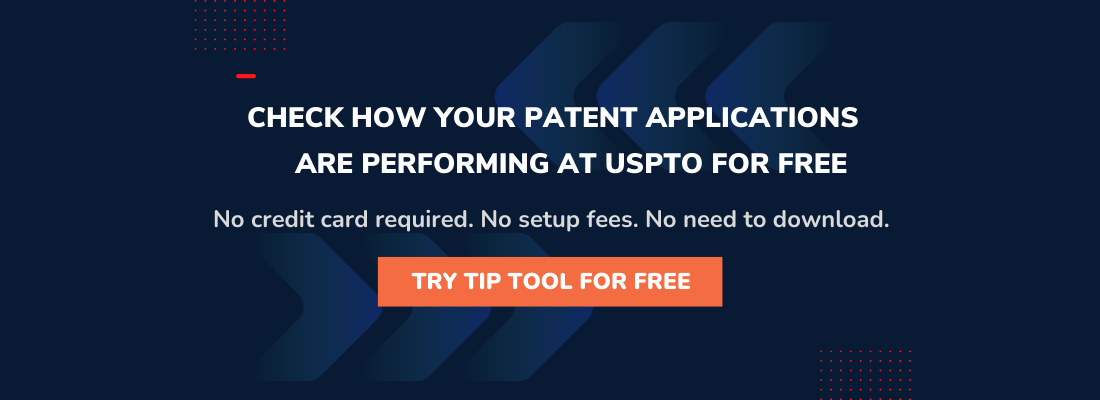Uber Technologies, Inc Patent Portfolio Statistics
Profile Summary
This article summarizes the perfomance of the assignee in the recent years. The overall statistics for this portfolio help to analyze the areas where the assignee is performing well. The filing trend, perfomance across the tech centers and the perfomance of the recent applications has been mentioned below. All the stats are calculated based on the perfomance in USPTO.
How does the overall patent portfolio of Uber Technologies, Inc. look like?
| Assignee | Art Units | |
| Total Applications: | 1,745 | 1,402,851 |
| Granted Patents: | 1,168 | 785,588 |
| Grant Index | 86.01% ↑ | 76.14% |
| Abandoned/Rejected Applications: | 190 (13.99%) | 246,137 (23.86%) |
| In-Process Applications: | 381 | 371,126 |
| Average Grant Time: | 2.63 Years ↓ | 2.99 Years |
| Average Office Actions: | 1.57 ↓ | 1.79 |
Which Technology Area Uber Technologies, Inc. is filing most patents in? (Last 10 years)
| Art Unit | Definition | Total Applications |
| 3661 | Computerized Vehicle Controls and Navigation, Radio Wave, Optical and Acoustic Wave Communication, Robotics, and Nuclear Systems | 144 |
| 3663 | Computerized Vehicle Controls and Navigation, Radio Wave, Optical and Acoustic Wave Communication, Robotics, and Nuclear Systems | 109 |
| Opap | Parked GAU | 107 |
| 3667 | Computerized Vehicle Controls and Navigation, Radio Wave, Optical and Acoustic Wave Communication, Robotics, and Nuclear Systems | 101 |
| 3668 | Computerized Vehicle Controls and Navigation, Radio Wave, Optical and Acoustic Wave Communication, Robotics, and Nuclear Systems | 69 |
How many patents are Uber Technologies, Inc. filing every year?
| Year | Total Applications | Predicted |
| 2022 | 0* | 458 |
| 2021 | 74* | 539 |
| 2020 | 143 | 509 |
| 2019 | 228 | 228 |
| 2018 | 321 | – |
| 2017 | 291 | – |
| 2016 | 144 | – |
| 2015 | 90 | – |
| 2014 | 45 | – |
| 2013 | 37 | – |
*The drop in the number of applications filed in last two years compared to previous years is because applications can take up to 18 months to get published
Recently filed patent applications of Uber Technologies, Inc. in USPTO?
Application number: 17/249,389
Abstract:
Publication date: 2021-09-16
Applicant: Uber Technologies, Inc.
Inventors: Depatla Saandeep
Publication number: US20220065647A1
Application number: 17/249,020
Abstract:
Publication date: 2022-03-03
Applicant: Uber Technologies, Inc.
Inventors: Brent Goldman
Publication number: US20210097559A1
Application number: 16/948,744
Abstract:
Publication date: 2021-04-01
Applicant: Uber Technologies, Inc.
Inventors: Albada Charles Michael
How are Uber Technologies, Inc.’s applications performing in USPTO?
| Application Number | Title | Status | Art Unit | Examiner |
| 17/249,389 | Location Accuracy Using Local Transmitters | Docketed New Case – Ready for Examination | 2465 | Cosme, Natasha W |
| 17/249,020 | Autonomous Vehicle Planned Route Prediction | Docketed New Case – Ready for Examination | OPAP | Central, Docket |
| 16/948,744 | Rider Pickup Location Optimization System | Response to Non-Final Office Action Entered and Forwarded to Examiner | 3624 | Koester, Michael Richard |
| 16/874,332 | System And Method For Selecting A Path In A Communication Network | Response to Non-Final Office Action Entered and Forwarded to Examiner | 2476 | Chau, Peter P |
| 16/871,931 | System For Steering Client Devices With Non-Weak Link In Communication Network And Method Thereof | Final Rejection Mailed | 2476 | Chau, Peter P |

